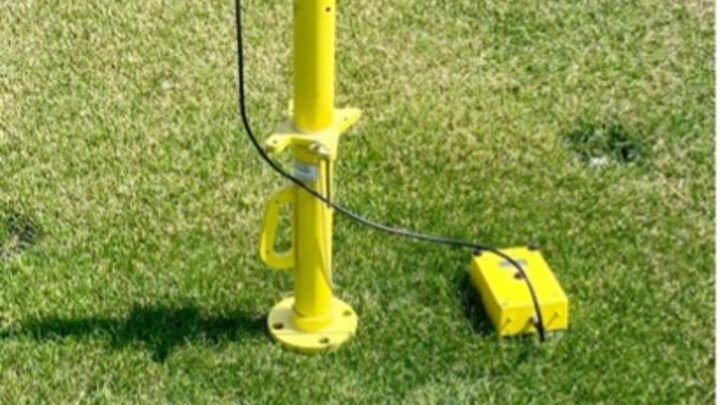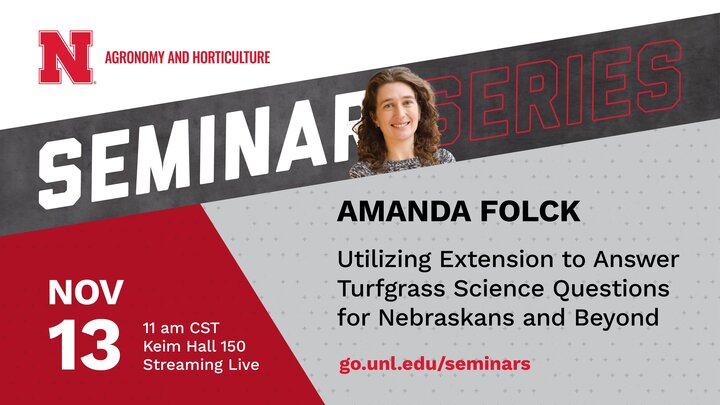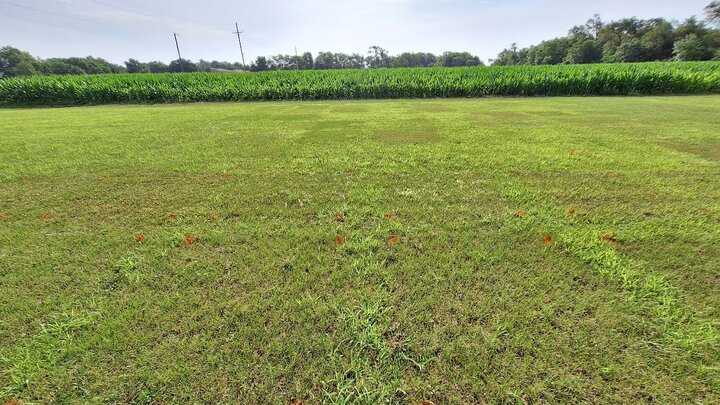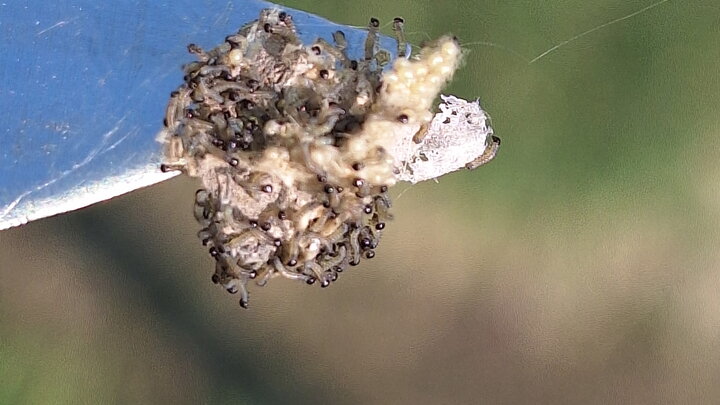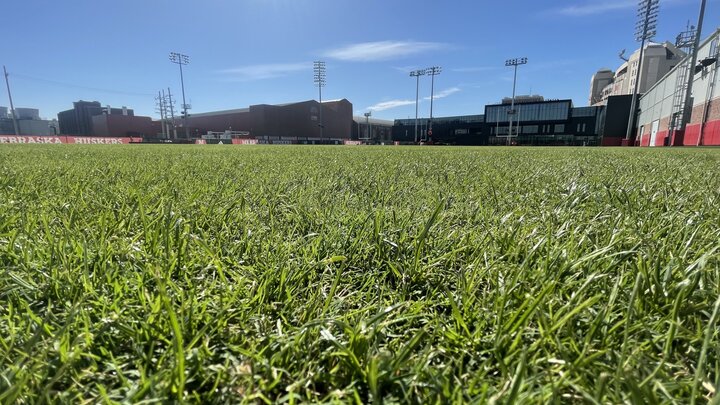Background
Kentucky bluegrass (KBG) has been suggested to be the recommended cool season grass for traffic areas in sports field management. This study is specifically for the Nebraska Turfgrass Field Day to determine what cultivars can manage traffic conditions in Kentucky bluegrass.
Objectives
Determine what type of Kentucky bluegrass cultivars has a consistent playing surface during the summer months in Nebraska.
Materials and Methods
Traffic used for the plots was conducted by two rollers with bolts attached to the roller and towed by a Toro Workman to mimic traffic conditions, known as the Brinkman traffic simulator. The traffic simulator were applied in different directions every week from May 1 to July 10. The mowing height in all plots during testing was 2 inches.

Figure 1. Brinkman traffic simulator
Measurement of results with traffic from the roller was done by the Clegg Impact Hammer (Figure 2). The range of the Clegg Impact Hammer is from 0 to 100 Gravities (Gmax).
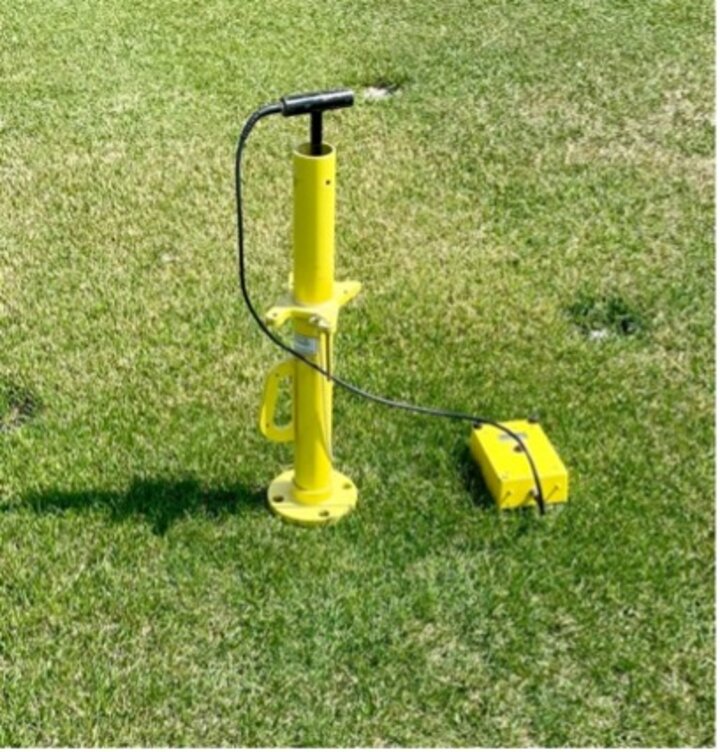
Figure 2. Clegg impact hammer
The use of the Clegg Impact Hammer was applied with one test per plot to all 267 plots. The 267 plots are the total for all three replications of the 89 cultivars used for NTEP testing. Based on the given numerical result after applying the hammer to the plot from the modified traffic, the result was recorded. The Gmax measurements for the traffic were completed on June 13, May 29, and July 13 on the 2017 NTEP Kentucky Bluegrass trial in the East Campus Turfgrass Research Center in Lincoln, NE.
Table 1. Weather conditions during the day of measuring Impact Hammer testing. Note: June was in “Exceptional Drought” and July was in “Severe Drought” from the droughtmonitor.unl.edu.
| Temp. High (°F) | Temp. Low (°F) | Wind (MPH) | Percip. (in) | |
|---|---|---|---|---|
| 13-Jun | 85 | 51 | 10 | 0 |
| 29-Jun | 93 | 69 | 38 | 0.58 |
| 13-Jul | 87 | 66 | 17 | 0.13 |
Results
The results from the three replications were averaged based on the three measurements taken on June 13, June 29, and July 13. Cultivars A-15-6, After Midnight, and DLFPS-340/3551 were the three lowest Gmax scores averages at 43.44, 44.11, and 44.22, respectively. The three highest average cultivars were DLFPS-340/3548, Kenblue, and A10-280 with Gmax scores averages of 54.78, 54.89, and 55.00, respectively.
Conclusion
Kentucky bluegrass has an acceptable range from the result of Clegg Impact Hammer testing. With a range from 35 to 61 Gmax, it is acceptable for playability during summer conditions in Lincoln, Nebraska. One factor for the higher or low Gmax results is the type of Kentucky bluegrass that can play into the effect of managing traffic conditions. Drought could be another factor with an effect in the higher range of average cultivars with DLFPS-340/3550, DLFPS-340/3556, and Barbette HGT.
